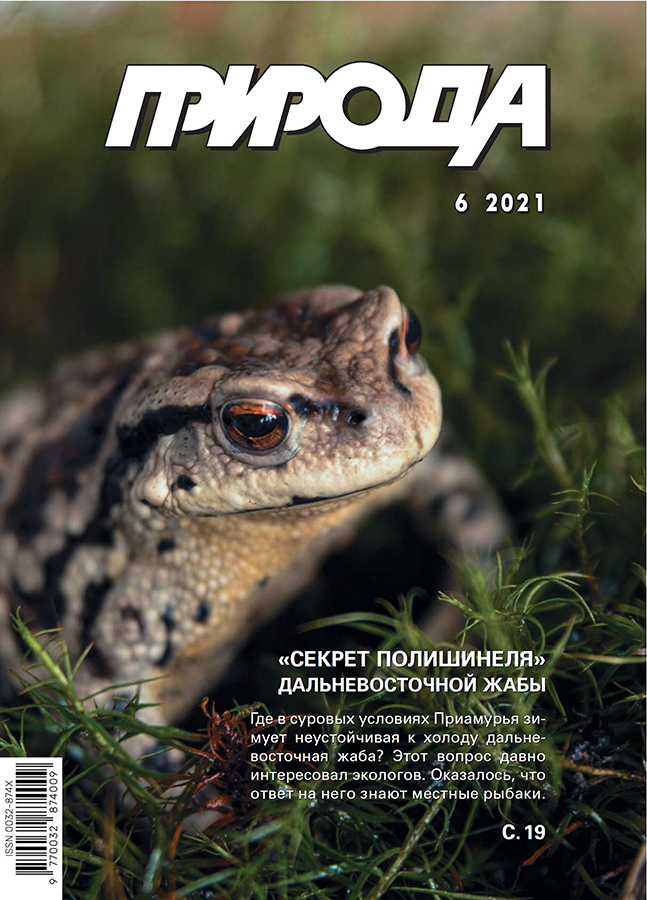From R-eudialytes to P-eudialytes
- Authors: Rastsvetaeva R.K1
-
Affiliations:
- Shubnikov Institute of Crystallography, RAS
- Issue: No 6 (2021)
- Pages: 45-53
- Section: Articles
- URL: https://journals.eco-vector.com/0032-874X/article/view/628001
- DOI: https://doi.org/10.7868/S0032874X21060053
- ID: 628001
Cite item
Abstract
Zirconosilicate eudialyte is not only one of the most complex mineral in composition and structure, but also a very mysterious. Since its discovery 200 years ago, it has been of constant interest to researchers. The uniqueness and practical importance of eudialyte ores is determined by their complexity. They are a source of rare earths and many rare elements including zirconium, hafnium, titanium, and niobium. Different chemical composition, structure, and conditions of origin of this mineral lead to a variations in its crystal chemical properties. The article discusses the crystal chemical features of eudialyte formed under specific conditions of slow crystallization at low temperatures at the last stages of cooling of the residual melt. Such conditions allowed the composition to be ordered according to the positions of the structure with a decrease in symmetry from rhombohedral to primitive. This paper describes eudialyte, first studied within the P3 symmetry, and the obtained information about its structure, which is close to real.
About the authors
R. K Rastsvetaeva
Shubnikov Institute of Crystallography, RAS
Email: rastcrys@gmail.com
Moscow, Russia
References
- Sjöqvist A.S.L. The Tale of Greenlandite: Commemorating the Two-Hundredth Anniversary of Eudialyte (1819–2019). Minerals. 2019; 9(8): 497–510.
- Голышев В.М., Симонов В.И., Белов Н.В. Кристаллическая структура эвдиалита. Кристаллография. 1972; 17(6): 1119–1123.
- Giuseppetti G., Mazzi F., Tadini C. The crystal structure of eudialyte. Tshermaks Mineral. Petrogr. Mitt. 1971; 16: 105–127.
- Расцветаева Р.К., Чуканов Н.В., Аксенов С.М. Минералы группы эвдиалита: кристаллохимия, свойства, генезис. Нижний Новгород, 2012.
- Расцветаева Р.К., Андрианов В.И. Новые данные о кристаллической структуре эвдиалита. ДАН СССР. 1987; 293(5): 1122–1126.
- Johnsen O., Grice J.D., Gault R.A. Oneillite: A new Ca-deficient and REE-rich member of the eudialyte group from Mont Saint-Hilaire, Quebec, Canada. Can. Mineral. 1999; 37: 1111–1117.
- Расцветаева Р.К., Хомяков А.П. Кристаллическая структура нового Mn,Na-упорядоченного аналога эвдиалита с симметрией R3. Кристаллография. 2000; 45(4): 649–653.
- Екименкова И.А., Расцветаева Р.К., Чуканов Н.В. Упорядочение кальция и железа в минерале группы эвдиалита с симметрией R3. Докл. АН. 2000; 374(3): 352–355.
- Расцветаева Р.К., Хомяков А.П., Андрианов В.И., Гусев А.И. Кристаллическая структура аллуайвита. ДАН СССР. 1990; 312(6): 1379–1383.
- Rastsvetaeva R.K., Khomyakov A.P., Chapuis G. Crystal structure and crystal-chemical features of a new Ti-rich member of the eudialyte family. Zeit. fur Krist. 1999; 214: 271–278.
- Хомяков А.П. Понятие о трансформационных минеральных видах и разновидностях. Минералогическое общество и минералогическая наука на пороге XXI в. Тез. докл. СПб., 1999; 263.
- Rastsvetaeva R.K., Chukanov N.V., Pekov I.V. New data on the isomorphism in eudialyte-group minerals. 1. Crystal chemistry of eudialyte-group members with Na incorporated into the framework as a marker of hyperagpaitic conditions. Minerals. 2020;10: 587.
- Rastsvetaeva R.K., Chukanov N.V. New data on the isomorphism in eudialyte-group minerals. 2. Crystal-chemical mechanisms of blocky isomorphism at the key sites (review). Minerals. 2020; 10: 720.
- Андрианов В.И. AREN-85 — система кристаллографических программ РЕНТГЕН на ЭВМ NORD, СМ-4 и ЕС. Кристаллография. 1987; 32: 228–231.
- Расцветаева Р.К., Чуканов Н.В. Кристаллическая структура первого представителя группы эвдиалита с примитивной ячейкой. Кристаллография. 2021. В печати.
- Chukanov N.V., Aksenov S.M., Pekov I.V. et. al. Sergevanite, Na15(Ca3Mn3)(Na2Fe)Zr3Si26O72(OH)3·H2O, a new eudialyte-group mineral from the Lovozero alkaline massif, Kola peninsula. Canadian mineralogist. 2020; 58: 1–16.
Supplementary files









